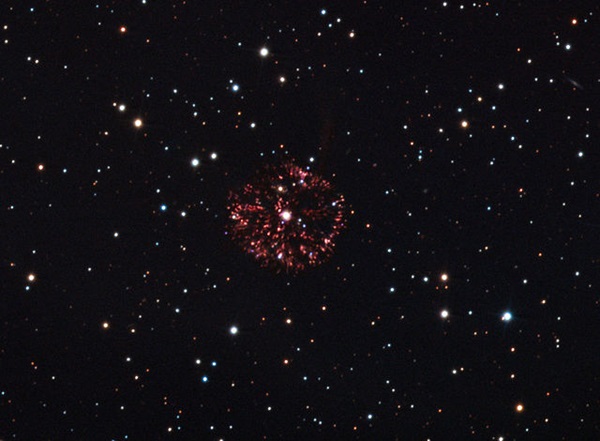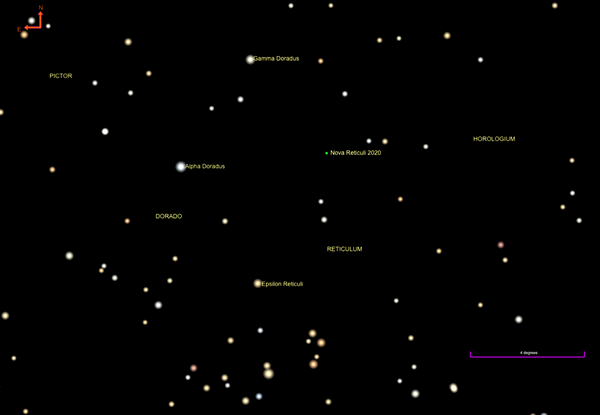Key Takeaways:
Nova Reticuli 2020 was spotted by veteran comet hunter Robert McNaught from Coonabarabran, Australia, on July 15. It’s currently visible around magnitude 5, near the bright stars Alpha (α) and Gamma (γ) Doradus. You can pinpoint it by looking roughly 5° west of magnitude 3.3 Alpha and 4.25° southwest of magnitude 4.3 Gamma.
The nova should appear as a new star in the sky where you don’t expect to see one. If you can’t spot it unaided or live in a light-polluted area, binoculars or a small telescope should easily bright it into view.
A classical nova
Following the discovery, quick follow-up work by additional astronomers indicates the event is a classical nova, which occur in binary systems housing a white dwarf (the remnant of a Sun-like star) and a main sequence, hydrogen-burning star. If the two are in a tight enough orbit, the white dwarf can pull material off its companion. This transferred mass — mainly hydrogen — piles onto the white dwarf’s surface. Eventually, enough accumulates that the temperature and pressure at the surface rise, sparking a thermonuclear reaction. The reaction causes the built-up hydrogen to rapidly undergo fusion into heavier elements, releasing immense amounts of energy in a blast we see from Earth as a nova.
This is a bit like what happens during a Type Ia supernova, but there’s a key difference: Type Ia supernovae destroy their white dwarf progenitors, while classical novae do not. That’s because the runaway reaction happens within the white dwarf during a supernova, blasting it to bits. During a nova, the reaction only happens on the white dwarf’s surface, leaving the rest of the star intact. So, a Type Ia supernova can only happen once, but a classical nova can reoccur numerous times.
Observers have noted that Nova Reticuli 2020’s position in the sky is close to a previously discovered object, MGAB-V207, which astronomers classify as a VY Scl-type cataclysmic variable — meaning it has previously undergone sudden drops in brightness that astronomers associate with episodes of mass transfer from a companion to a white dwarf. According to an Astronomer’s Telegram, the coincident positions, coupled with the follow-up observations indicating that this particular outburst is a classical nova, suggest Nova Reticuli 2020 may be the third ever classical nova observed in a star system previously known to contain a white dwarf.
If you’re a Southern Hemisphere observer interested in adding your data to the mix, you can submit observations to the American Association of Variable Star Observers using the object name MGAB-V207 or N RET 2020.
Want to stay up to date on what’s in the sky tonight? We’ve got you covered:
Check out our weekly observing column, Sky This Week!











